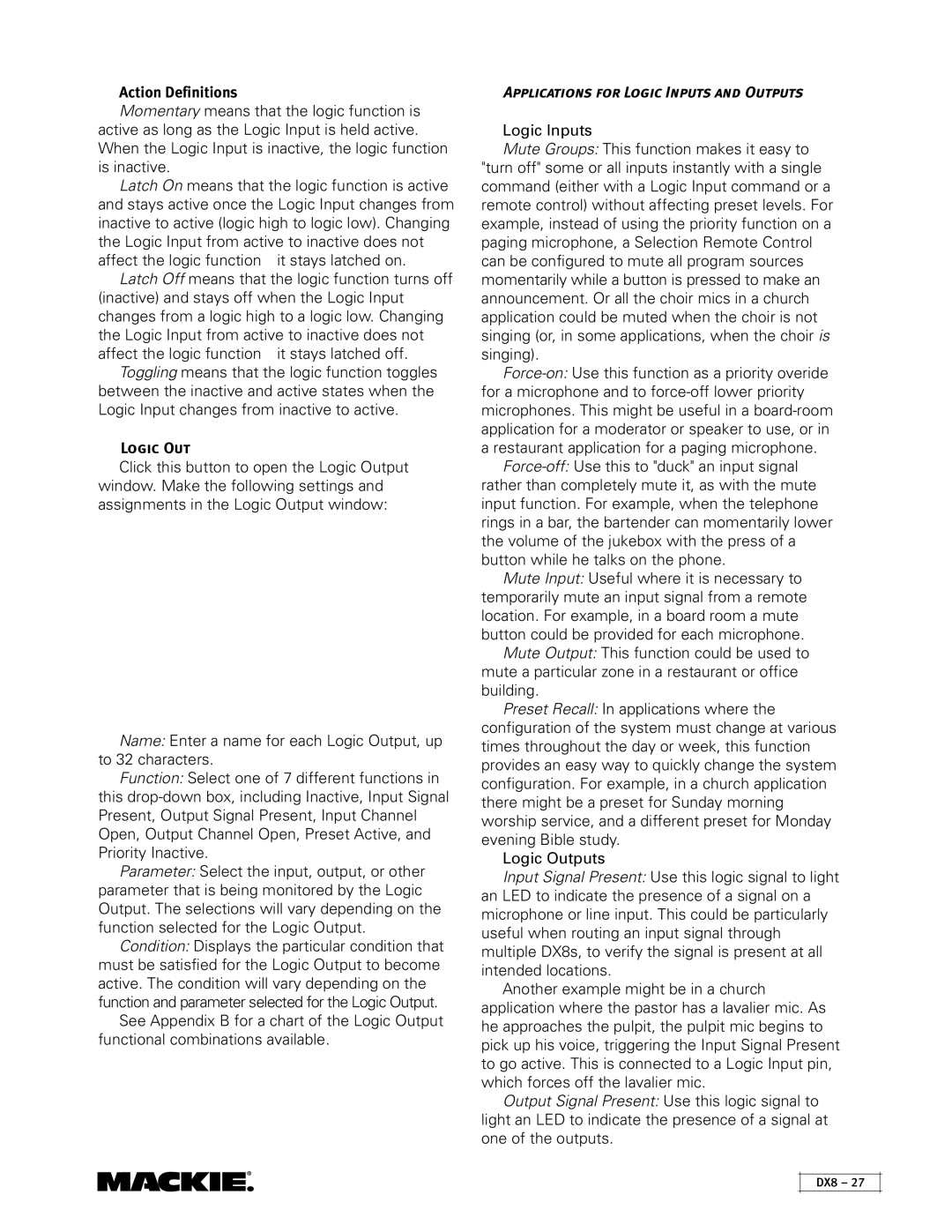
Action Definitions
Momentary means that the logic function is active as long as the Logic Input is held active. When the Logic Input is inactive, the logic function is inactive.
Latch On means that the logic function is active and stays active once the Logic Input changes from inactive to active (logic high to logic low). Changing the Logic Input from active to inactive does not affect the logic
Latch Off means that the logic function turns off (inactive) and stays off when the Logic Input changes from a logic high to a logic low. Changing the Logic Input from active to inactive does not affect the logic
Toggling means that the logic function toggles between the inactive and active states when the Logic Input changes from inactive to active.
Logic Out
Click this button to open the Logic Output window. Make the following settings and assignments in the Logic Output window:
Name: Enter a name for each Logic Output, up to 32 characters.
Function: Select one of 7 different functions in this
Parameter: Select the input, output, or other parameter that is being monitored by the Logic Output. The selections will vary depending on the function selected for the Logic Output.
Condition: Displays the particular condition that must be satisfied for the Logic Output to become active. The condition will vary depending on the function and parameter selected for the Logic Output.
See Appendix B for a chart of the Logic Output functional combinations available.
Applications for Logic Inputs and Outputs
Logic Inputs
Mute Groups: This function makes it easy to "turn off" some or all inputs instantly with a single command (either with a Logic Input command or a remote control) without affecting preset levels. For example, instead of using the priority function on a paging microphone, a Selection Remote Control can be configured to mute all program sources momentarily while a button is pressed to make an announcement. Or all the choir mics in a church application could be muted when the choir is not singing (or, in some applications, when the choir is singing).
Mute Input: Useful where it is necessary to temporarily mute an input signal from a remote location. For example, in a board room a mute button could be provided for each microphone.
Mute Output: This function could be used to mute a particular zone in a restaurant or office building.
Preset Recall: In applications where the configuration of the system must change at various times throughout the day or week, this function provides an easy way to quickly change the system configuration. For example, in a church application there might be a preset for Sunday morning worship service, and a different preset for Monday evening Bible study.
Logic Outputs
Input Signal Present: Use this logic signal to light an LED to indicate the presence of a signal on a microphone or line input. This could be particularly useful when routing an input signal through multiple DX8s, to verify the signal is present at all intended locations.
Another example might be in a church application where the pastor has a lavalier mic. As he approaches the pulpit, the pulpit mic begins to pick up his voice, triggering the Input Signal Present to go active. This is connected to a Logic Input pin, which forces off the lavalier mic.
Output Signal Present: Use this logic signal to light an LED to indicate the presence of a signal at one of the outputs.
DX8 – 27
